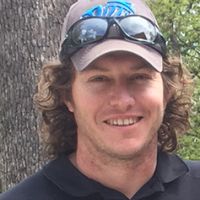Li et al., 2018
The Effect of Lithology and Agriculture at the Susquehanna Shale Hills Critical Zone Observatory
Li Li, DiBiase Roman A., Del Vecchio Joanmarie, Marcon Virginia, Hoagland Beth, Xiao Dacheng, Wayman Callum, Tang Qicheng, He Yuting, Silverhart Perri, Szink Ismaiel, Forsythe Brandon, Williams Jennifer Z., Shapich Dan, Mount Gregory J., Kaye Jason, Guo Li, Lin Henry, Eissenstat David, Dere Ashlee, Brubaker Kristen, Kaye Margot, Davis Kenneth J., Russo Tess A., Brantley Susan L. (2018)
Vadose Zone Journal, 17:180063
-
Shale Hills, INVESTIGATOR
-
Shale Hills, INVESTIGATOR
-
Shale Hills, GRAD STUDENT
-
Shale Hills, GRAD STUDENT
-
Shale Hills, GRAD STUDENT
-
Shale Hills, GRAD STUDENT
-
Shale Hills, GRAD STUDENT
-
Shale Hills, GRAD STUDENT
-
Shale Hills, GRAD STUDENT
-
Shale Hills, GRAD STUDENT
-
Shale Hills, GRAD STUDENT
-
Shale Hills, STAFF
-
Shale Hills, STAFF
-
Shale Hills, STAFF
-
Shale Hills, INVESTIGATOR, COLLABORATOR
-
Shale Hills, INVESTIGATOR
-
Shale Hills, INVESTIGATOR
-
IML, Shale Hills, INVESTIGATOR
-
Shale Hills, INVESTIGATOR
-
Shale Hills, INVESTIGATOR, COLLABORATOR
-
Shale Hills, INVESTIGATOR, COLLABORATOR
-
Shale Hills, INVESTIGATOR
-
Shale Hills, INVESTIGATOR
-
Shale Hills, INVESTIGATOR
-
National, Eel, Luquillo, Shale Hills, INVESTIGATOR, COLLABORATOR
Abstract
The footprint of the Susquehanna Shale Hills Critical Zone Observatory was expanded in 2013 from the forested Shale Hills subcatchment (0.08 km2) to most of Shavers Creek watershed (163 km2) in an effort to understand the interactions among water, energy, gas, solute, and sediment. The main stem of Shavers Creek is now monitored, and instrumentation has been installed in two new subcatchments: Garner Run and Cole Farm. Garner Run is a pristine forested site underlain by sandstone, whereas Cole Farm is a cultivated site on calcareous shale. We describe preliminary data and insights about how the critical zone has evolved on sites of different lithology, vegetation, and land use. A notable conceptual model that has emerged is the “two water table” concept. Despite differences in critical zone architecture, we found evidence in each catchment of a shallow and a deep water table, with the former defined by shallow interflow and the latter defined by deeper groundwater flow through weathered and fractured bedrock. We show that the shallow and deep waters have distinct chemical signatures. The proportion of contribution from each water type to stream discharge plays a key role in determining how concentrations, including nutrients, vary as a function of stream discharge. This illustrates the benefits of the critical zone observatory approach: having common sites to grapple with cross-disciplinary research questions, to integrate diverse datasets, and to support model development that ultimately enables the development of powerful conceptual and numerical frameworks for large-scale hindcasting and forecasting capabilities.
Citation
Li Li, DiBiase Roman A., Del Vecchio Joanmarie, Marcon Virginia, Hoagland Beth, Xiao Dacheng, Wayman Callum, Tang Qicheng, He Yuting, Silverhart Perri, Szink Ismaiel, Forsythe Brandon, Williams Jennifer Z., Shapich Dan, Mount Gregory J., Kaye Jason, Guo Li, Lin Henry, Eissenstat David, Dere Ashlee, Brubaker Kristen, Kaye Margot, Davis Kenneth J., Russo Tess A., Brantley Susan L. (2018): The Effect of Lithology and Agriculture at the Susquehanna Shale Hills Critical Zone Observatory. Vadose Zone Journal, 17:180063. DOI: 10.2136/vzj2018.03.0063
 This Paper/Book acknowledges NSF CZO grant support.
This Paper/Book acknowledges NSF CZO grant support.
Explore Further


























